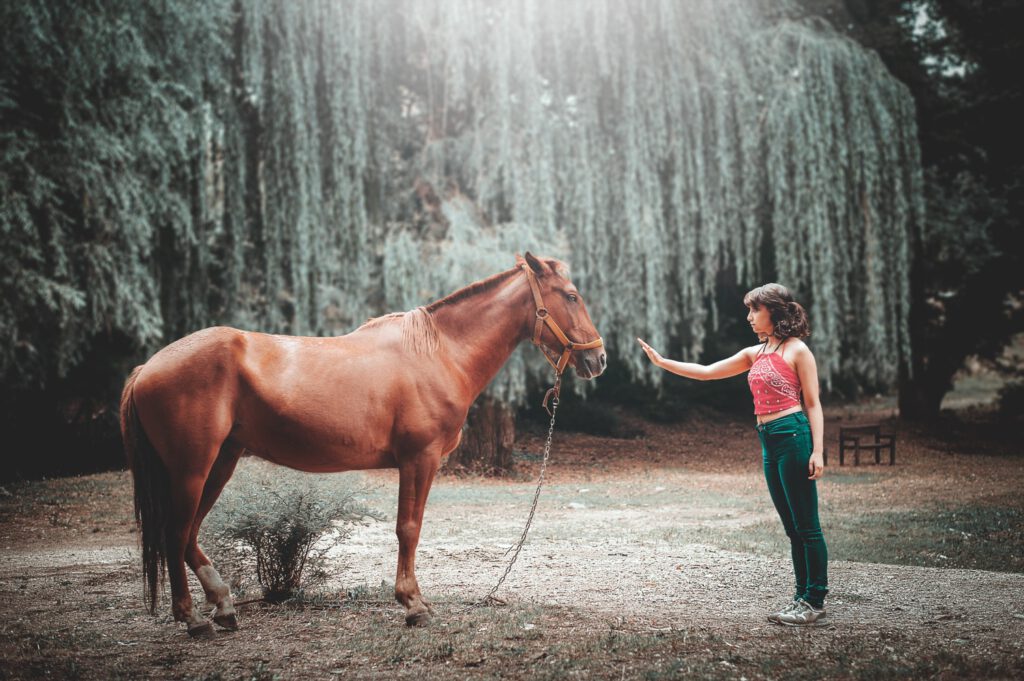Also known as “teacher-animator”, “monitor”, “instructor” or “professor”, the teacher has a major responsibility in equestrian establishments.

Duties of the riding instructor
The riding instructor is one of the most emblematic professions in the equestrian world. Their primary role is to teach riding to the school’s students. Like all teachers of any subject, they must have pedagogical skills.
But beyond this essential role, the instructor has a central and multifaceted role in the equestrian establishment:
- preparing and training the center’s horses;
- managing the number of horses, purchasing new horses, ensuring progress, and managing the end of a career;
- controls the general appearance of the facility;
- is responsible for compliance with health and safety regulations;
- customer relations need analysis, motivation assessment, means of building customer loyalty and development, quality of welcome and information, organization of entertainment;
- manages staff follow-up;
- administrative management of the center, organization of lessons, distribution of students, horse work, data entry.
Career paths for a riding instructor
An instructor’s career development depends on his or her motivation, and on additional training to acquire further qualifications.
They can go on to become:
- director of an equestrian establishment;
- technical manager for the Ministry of Youth and Sports (departmental, regional, or national technical advisor, member of the national technical directorate);
- teacher at the National Riding School (i.e., a teacher trainer).
How do I become a riding instructor?
To become a riding instructor, you need to have obtained the 1st degree state diploma in sports education, equestrian option.
Training is organized
- either on a sandwich course, over one or two years, in a training center staffed by a teacher who has obtained the 2nd degree state diploma in sports education. Candidates must have a first-aid training certificate (first-aid certificate) or a minimum Galop 7 issued by the French Equestrian Federation, and have passed a pre-qualification course, or hold a B.A.P.A.A.T. horse riding or trekking, or a pony or equestrian tourism guide certificate.
- or at the National Riding School, over one year. Candidates must hold a baccalaureate, a galop 7 and regional-level sporting performance in an Olympic discipline (dressage, show jumping or eventing), have a horse suitable for the training and have passed a selection test (10 places each year).
Graduates of the National Riding School will go on to study with the University of Angers for a four-year master’s degree in equestrian teaching and management.
Graduates of the B.E.E.S. du Lr degree can also continue their training to obtain the 2nd degree state diploma in sports education.
This training is only available after two years’ professional experience with the B.E.E.S. 1er degree. It is carried out at the National Riding School, either in modular form (twelve weeks spread over two years), or as a long training course (one year).


